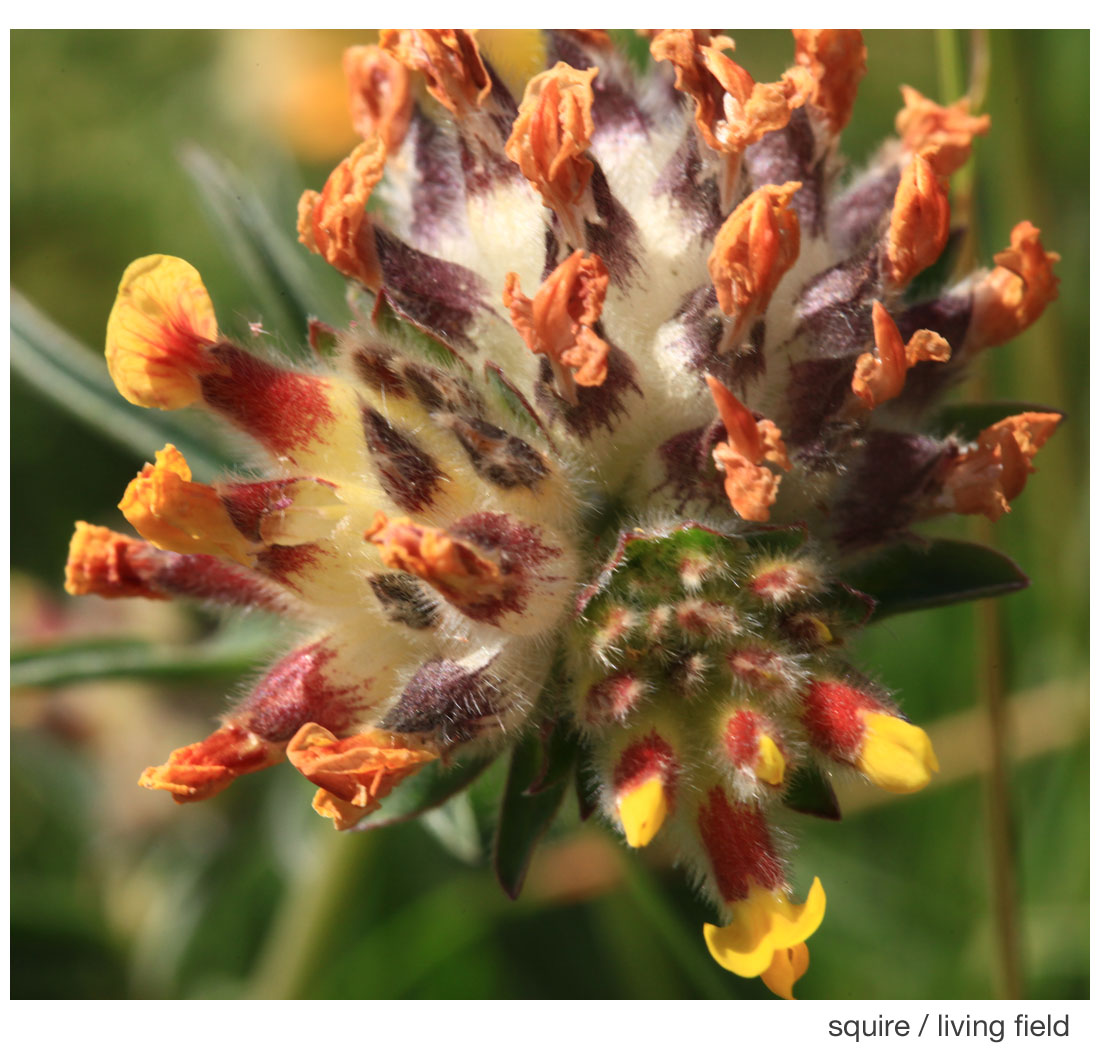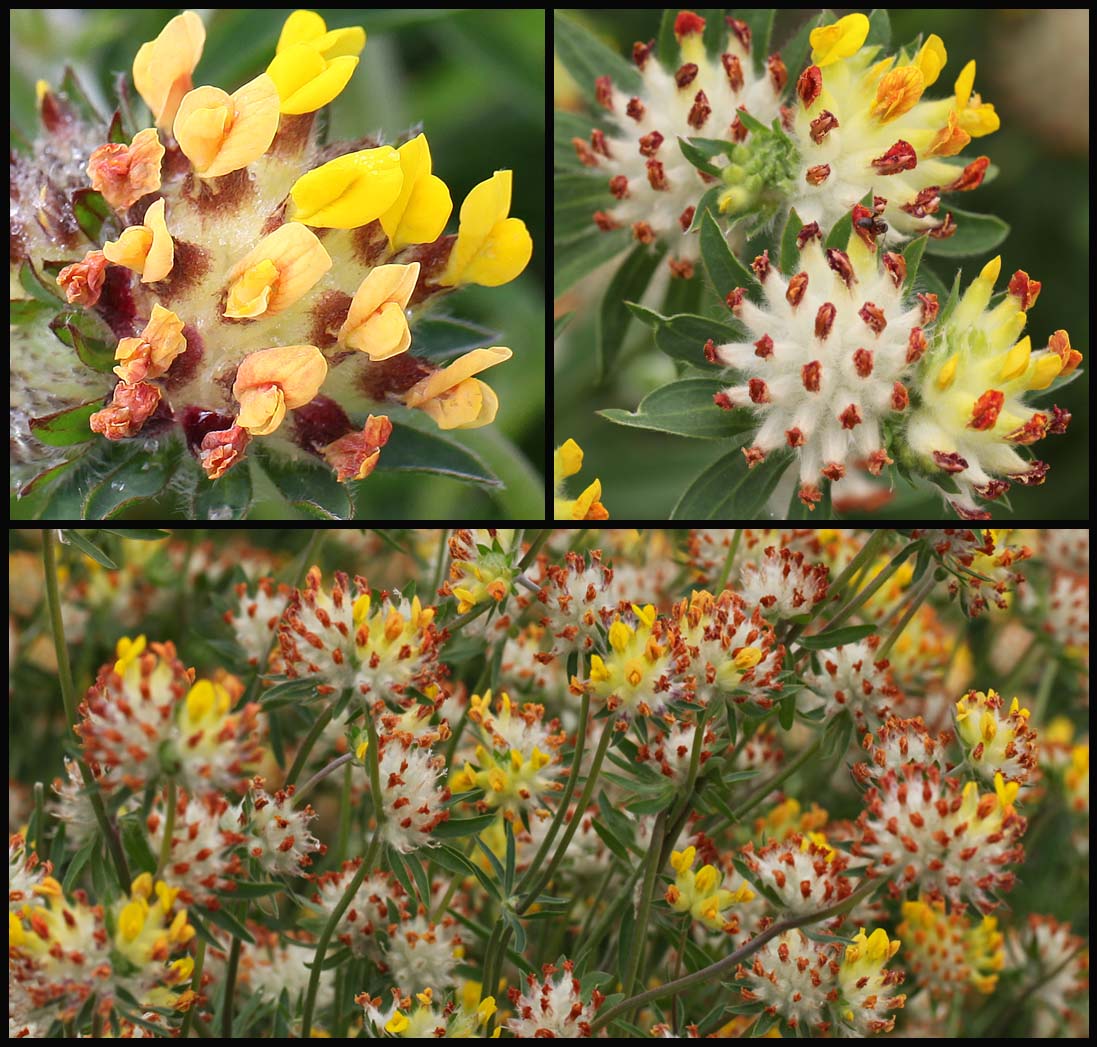The kidney vetch Anthyllis vulneraria was noted in a recent post about nitrogen-fixers living by the shore on the east coast of Angus. But the kidney vetch has wider acclaim as host of the rare Small Blue butterfly Cupido minimus.

The small blue lays its eggs in the flowering heads of kidney vetch. The hatched larvae then eat the flowers and the developing seed.
However, the range of the butterfly in the north east has decreased in recent years and attempts are being made to record its occurrence. For more on the small blue and current surveys in Scotland –
- Butterfly conservation – small blue
- North East Biodiversity – small blue butterfly project
- East Scotland butterflies – small blue survey
In the latter can be found people to contact if you want to take part in surveys or to report sight of the butterfly.
Kidney vetch
The kidney vetch is one of the nitrogen-fixing legumes that occur in nitrogen-poor, dry and unshaded environments around the coast of eastern Scotland.
Yet it was once considered as a sown forage – a constituent of vegetation managed for stock-feeding. Lawson and Son (1852) write that it ‘does not yield much produce, but is eaten with avidity by horses, sheep and cattle, and also by hares and rabbits, and might therefore be introduced into mixtures for very dry soils’.
In the Garden
The Living Field garden grows kidney vetch in its medicinals collection and in the raised beds that have housed a legume collection over the past few years (images below). It grows well, forming luxuriant clumps up to 30 cm in height, taller than on the coast. The flowers are usually more yellow, less red than on the wild plants.
It flowers and seeds profusely in the garden. Some plants die in the winter, but in the last two years it has regenerated freely from its own dropped seed.

The flower heads
The round ‘wooly’ heads may be confusing at first sight, but each ball consists of usually three separate heads each holding many individual flowers. The three heads do not all flower at the same time.
In the image at the top of the page, the head to the lower right is the latest to flower – some flowers are still in bud while others have the fresh yellow petals emerging from the red calyx tube (which previously enclosed the bud). The head to the left has a mix of new and withered flowers. The largest one, at the top middle and right, has finished flowering: all petals are withered orange, the calyx tubes have turned purple and the hairs have expanded into a whitish mass, protecting the seeds that will form deep in the tubes.
Reference
Lawson and Son. 1852. Synopsis of the vegetable products of Scotland. Authors’ private press, Edinburgh.
